You are using an out of date browser. It may not display this or other websites correctly.
You should upgrade or use an alternative browser.
You should upgrade or use an alternative browser.
Isoacoustics pucks/orea
- Thread starter indus
- Start date
That's a lot of money for a sprung platform, given that other alternatives exist, such as machine feet as used in industry. You want to know it works, don't you?
Who knows? The laws of physics say that a speaker's proximity to the ground, and the composition of that floor, affects its sound because the sound reflects off the floor. The further you move it away, the less reflections there are so the greater the effect. At what point does it become (in)significant? Well, without speaker modelling software, that's anyone's guess.
If I'd tried a damped spring platform in the form of squash balls and not seen a difference, I would be very skeptical about whether another damped spring platform was going to bring me sonic nirvana this time. You have changed components, sure, but an engineer would not be quick to repeat an experiment that had not given encouraging results in similar situations in the past.
Hi
On your first point, what are the alternatives you refer to?
On your final point; you may have misunderstood me. I've had squash balls under my valve pre amp for years. I've just a few weeks ago replaced them with mini isopucks and it seems to have improved the sound.
That's what has led me to look at similar solutions for my speakers.
Thanks
Have a look here:Hi
On your first point, what are the alternatives you refer to?
https://www.polymax.co.uk/anti-vibration-rubber-mount/rubber-feet/adjustable-feet/
This is exactly the same engineering brief, they can be used under sensitive equipment like precision scales, or they can be put under machines in factories. Different models of course, but this kind of engineering has been around for ever at very modest cost. It's not necessarily an off the shelf solution, but it doesn't cost £800 either. Remember that an engineer is someone who can build for £5 what any fool can make for £50.
Now that DOES make sense!On your final point; you may have misunderstood me. I've had squash balls under my valve pre amp for years. I've just a few weeks ago replaced them with mini isopucks and it seems to have improved the sound.
That's what has led me to look at similar solutions for my speakers.
vinylslug
pfm Member
I took delivery of my IsoPucks today - I went for 3 per speaker (LS50s on stands) and... initial impressions; they feel like a worthwhile tweak (£130 for 6 pucks...). I try not to make snap decisions or pay too much heed to first impressions, so will live with them for a bit and they'll either stay under my speakers or they won't. I was playing Piano music all morning (before the pucks) [Visions, by the Naughton sisters] and continued once I'd installed the pucks and I thought there was a difference, which could be explained by the change in height alone perhaps?...but I felt immediately that it might be better, but inconclusive. (I'll play the full album again later and see if I find I'm more or less engaged.)
I then played some Mark Knopfler's Sailing to Philadelphia and had one of those "Gosh" moments. Soundstage a little wider? Details a little more...detailed? Hmmm maybe - but it certainly sounded lovely. More lovely than I remember.
It's early days, hence the slightly rambled description, but I can't see why these pucks won't be staying. So far, it's more change than I've ever noticed with an interconnect (comparably priced too) - given that the addition of pucks is a mechanical change, then I suppose that makes a bit of sense.
I then played some Mark Knopfler's Sailing to Philadelphia and had one of those "Gosh" moments. Soundstage a little wider? Details a little more...detailed? Hmmm maybe - but it certainly sounded lovely. More lovely than I remember.
It's early days, hence the slightly rambled description, but I can't see why these pucks won't be staying. So far, it's more change than I've ever noticed with an interconnect (comparably priced too) - given that the addition of pucks is a mechanical change, then I suppose that makes a bit of sense.
ToTo Man
the band not the dog
They are slightly concave in profile on both top and bottom surfaces which is claimed to provide a suction-cup like effect. Together with the friction/grip provided by the material itself, the speaker is effectively anchored in place but is of course still allowed to wobble a little as that is key to the functioning of the puck. I guess it's possible to knock the speaker off the pucks, but you'd have to give it one hell of a push to do so!Do the IsoPucks adhere ie; anchor the speakers to the stand like Blu Tac does?
vinylslug
pfm Member
Yes - they're surprisingly 'sticky' - I tried to make small adjustments to their position under the speakers and had to use reasonable force to detach them from the speaker to move them a little.Do the IsoPucks adhere ie; anchor the speakers to the stand like Blu Tac does?
rag987
pfm Member
I used some spare iso pucks under my bryston amplifiers and sotm streamer. Cannot hear a difference.Has anyone used the Oreas on Naim classic series of amps (or any other amp or equipment) supported on poor racks?
Under speakers and subwoofers they are great.
I've picked up some of these after reading experiences on another forum. They are the Nobsound springs.
I was made to understand that the Townshend Seismic pods are some of the best (if not the best) isolation products in the market at the moment. The Nobsound springs and Isoacoustics Orea come in a distant second and third. Few folks who compared the Nobsound and Oreas returned the latter and kept the Nobsounds.
The Nobsound isolators are highly tweakable as they can be run in various configurations. In brief summary, they will bring a noticeable change to the sound. The number of springs in each isolator will determine the degree of compression of the footers which in turn affects the control of resonance. If the set up is not done properly, sound quality will get worse. Unlike the Isoacoustics Oreas (or perhaps the Townshend Pods), the number of springs in each footer will need to be adjusted to compensate for uneven load distribution from the component. For this reason, some patience would be required to set them up correctly. One cannot expect instant great results after installing these without much effort, which is one of the disadvantages of the Nobsounds. Unlike the fit and forget Oreas.
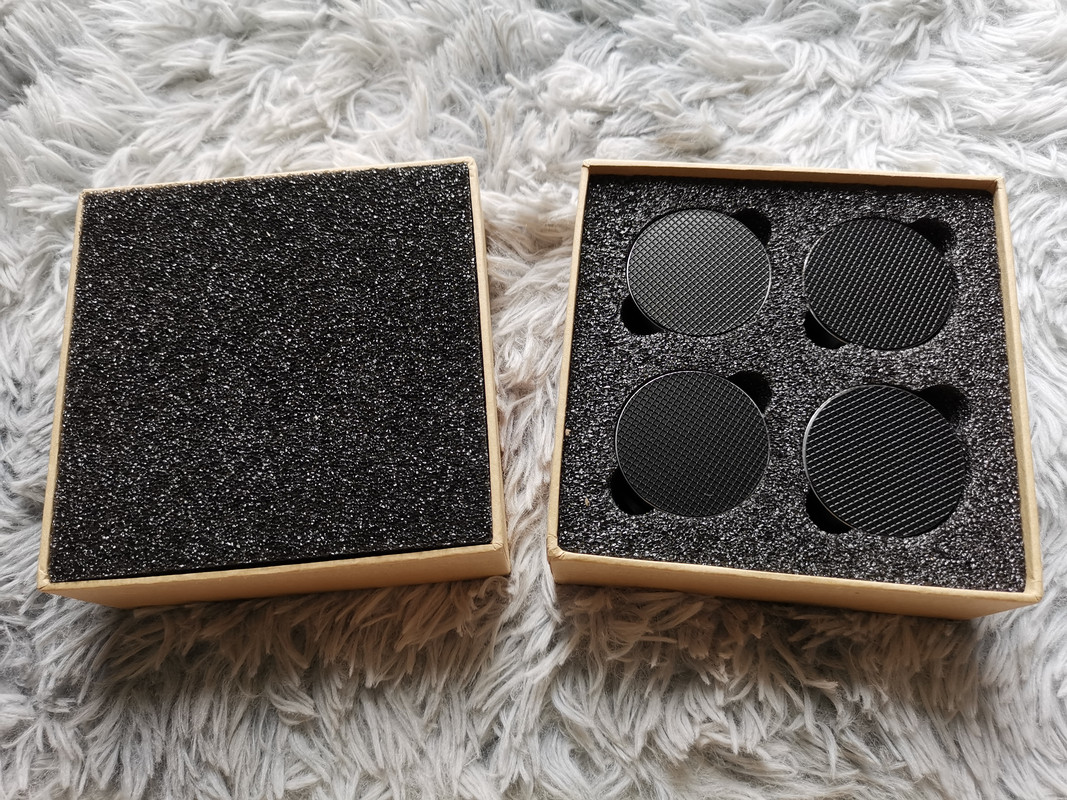
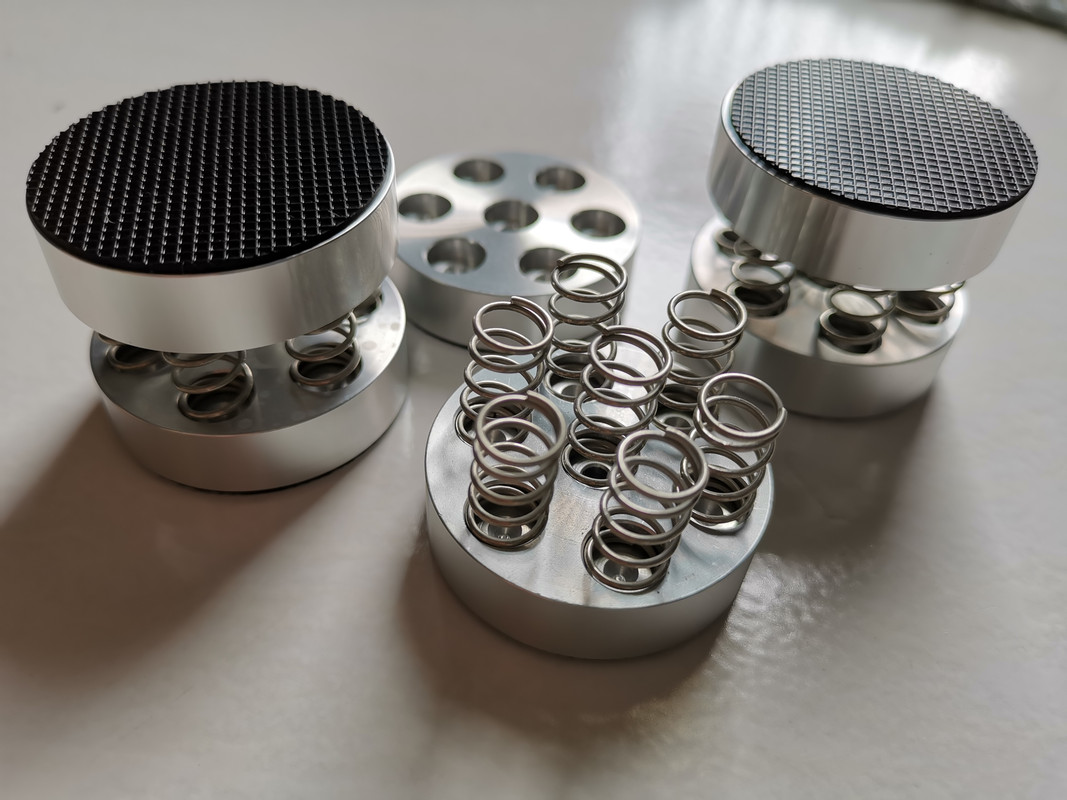
I was made to understand that the Townshend Seismic pods are some of the best (if not the best) isolation products in the market at the moment. The Nobsound springs and Isoacoustics Orea come in a distant second and third. Few folks who compared the Nobsound and Oreas returned the latter and kept the Nobsounds.
The Nobsound isolators are highly tweakable as they can be run in various configurations. In brief summary, they will bring a noticeable change to the sound. The number of springs in each isolator will determine the degree of compression of the footers which in turn affects the control of resonance. If the set up is not done properly, sound quality will get worse. Unlike the Isoacoustics Oreas (or perhaps the Townshend Pods), the number of springs in each footer will need to be adjusted to compensate for uneven load distribution from the component. For this reason, some patience would be required to set them up correctly. One cannot expect instant great results after installing these without much effort, which is one of the disadvantages of the Nobsounds. Unlike the fit and forget Oreas.


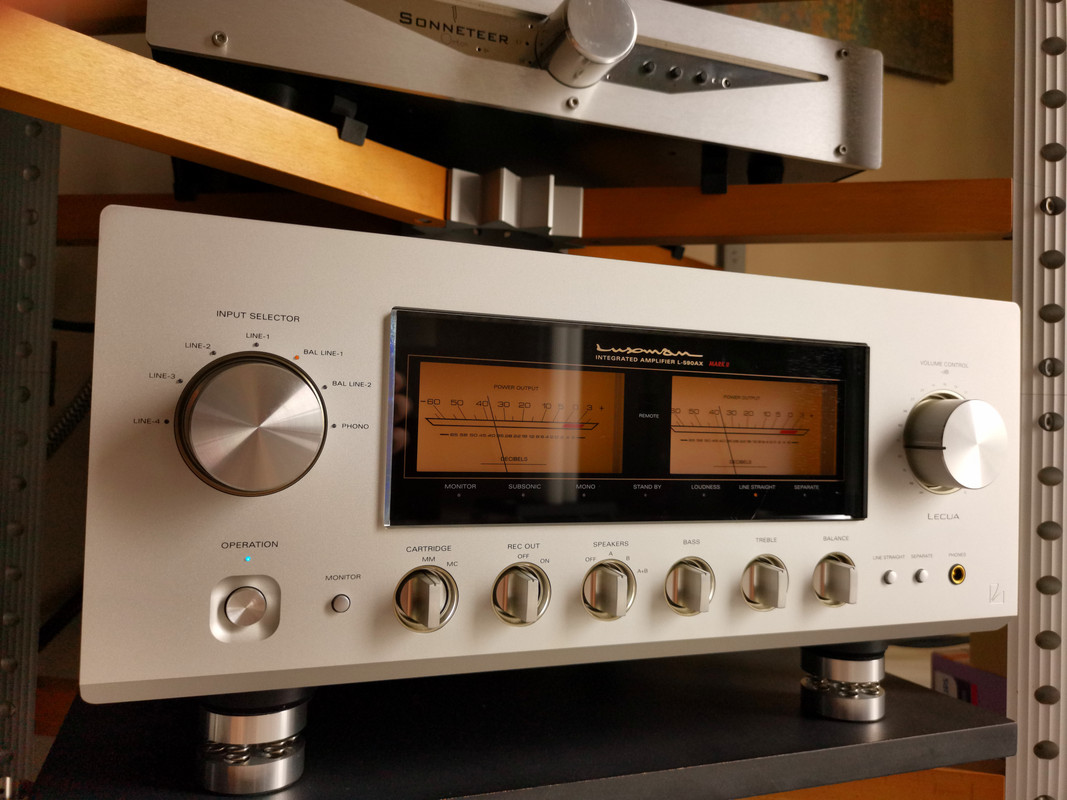
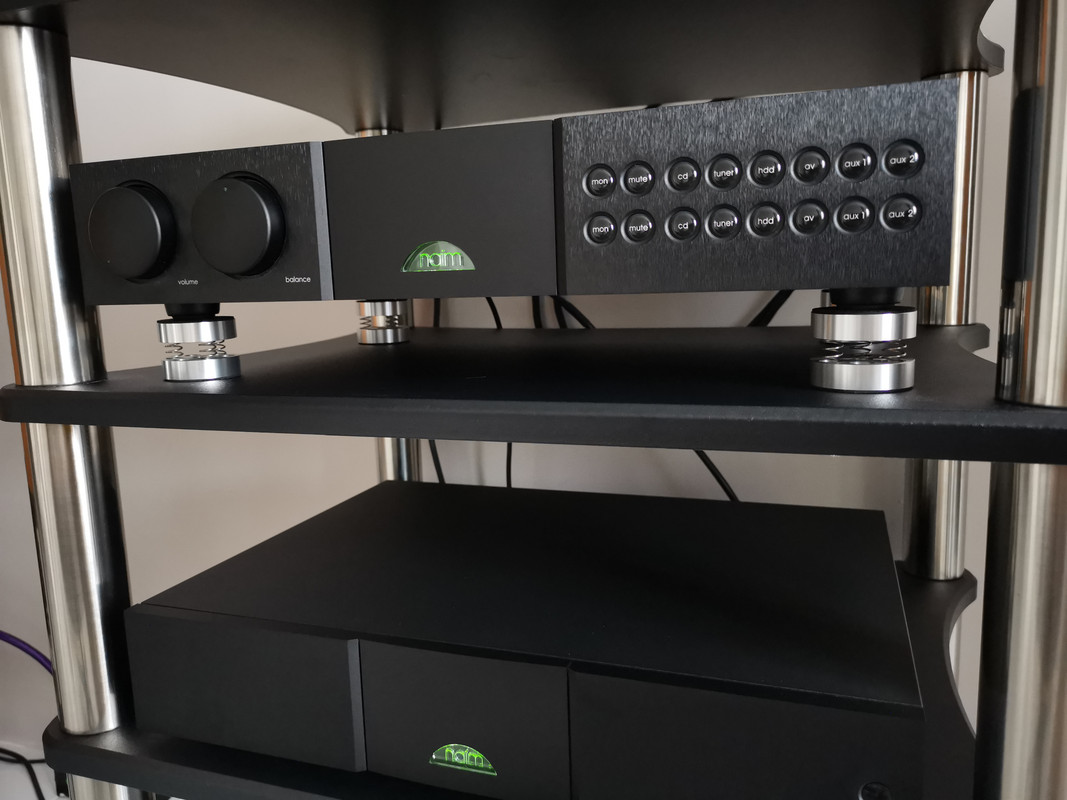
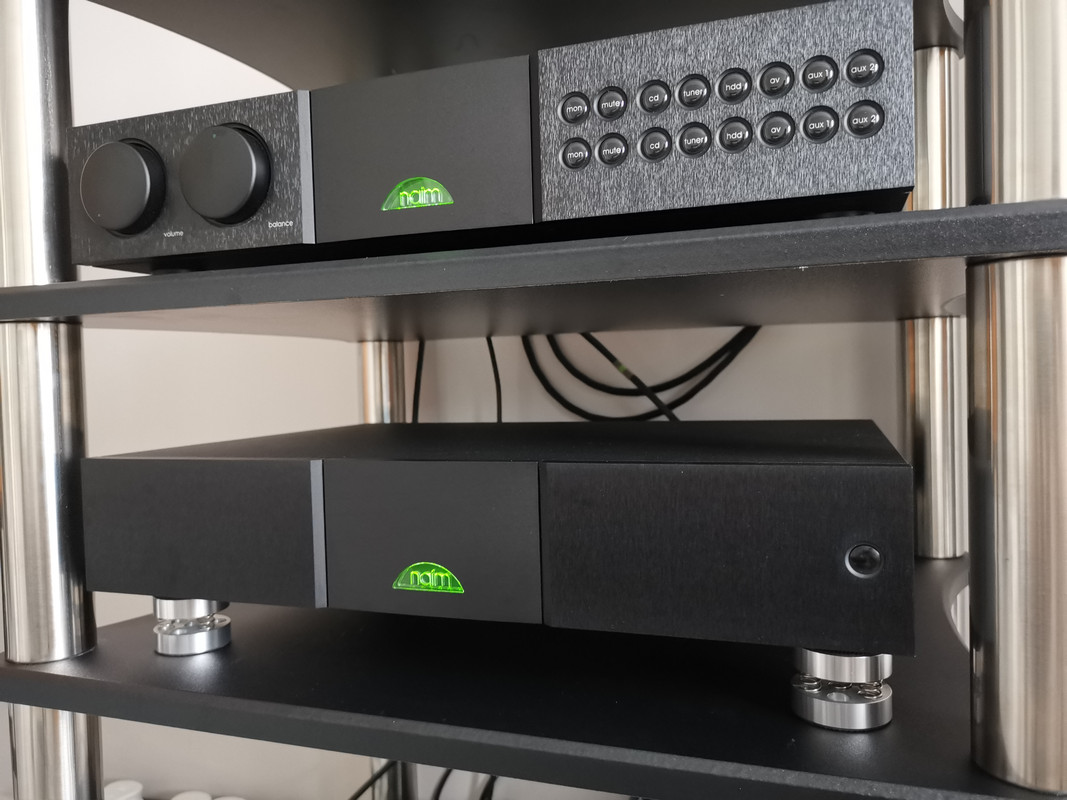
I'm currently still in the experimentation phase but these have brought a positive change to the Luxman. With the Naim, currently there's no difference when they are placed on the preamp. The sound got worse when they are under the power amp, all due to improper set up. The power amp is heavier on the right side where the huge toroidal transformer is placed and this has caused an unbalanced loading.
hifinutt
hifinutt
why not just use ordinary iso pucks ? 88 quid for 4
https://sxpro.co.uk/isoacoustics-is...GnI3MCv9mgkoVzohSwUOfXft7v8Usv3RoCpCUQAvD_BwE
https://sxpro.co.uk/isoacoustics-is...GnI3MCv9mgkoVzohSwUOfXft7v8Usv3RoCpCUQAvD_BwE
hifinutt
hifinutt
Do the IsoPucks adhere ie; anchor the speakers to the stand like Blu Tac does?
used these a lot now since this thread started . they come off very easy and do not stick . tried on lots of speakers and kit
JTC
PFM Villager...
Basically down to weight. The standard IsoPuck holds up to 9Kg per puck, and my transport weighs 15Kg. Three IsoPucks would have too much load capacity, and two wouldn't be stable. So it's three Indigos (7.2Kg each) or six IsoPuck Minis (2.75Kg each) to support a 15Kg unit.why not just use ordinary iso pucks ? 88 quid for 4
https://sxpro.co.uk/isoacoustics-is...GnI3MCv9mgkoVzohSwUOfXft7v8Usv3RoCpCUQAvD_BwE
Also, there's allegedly a small improvement to be had with the silver series, although I doubt it's by much if at all. And they look a bit better under my silver-finish transport too.
FWIW IsoAcoustics could do with a 5Kg capacity Orea or IsoPuck since there's an awkward gap in their range - circa 15-17Kg components - that necessitates three Indigos or five Bronzes. I figured going beyond four might not be the best for levelling, so went with three Indigos. And even that's not entirely ideal as the best loading is close to, but just under, the max capacity (according to IsoAcoustics). Since they work on compression, best not to go over.
ToTo Man
the band not the dog
How do you know when the loading is optimal on these ones e.g. is the goal for the springs to compress to 50% their original length when loaded?I've picked up some of these after reading experiences on another forum. They are the Nobsound springs.

